Section 375 (12-a) of the NYS Vehicle and Traffic Law prohibits excessively dark tint on windshields and front side windows, mandating that they must allow at least 70% of outside light to pass through. This regulation aims to ensure adequate visibility and safety for drivers on New York roads.
New York Window Tinting Laws regulate the darkness and reflection of window tint used in vehicles across the state. These laws specify the allowable percentages of light transmission for different types of vehicles, ensuring compliance and safety on the roads.
State of New York Info
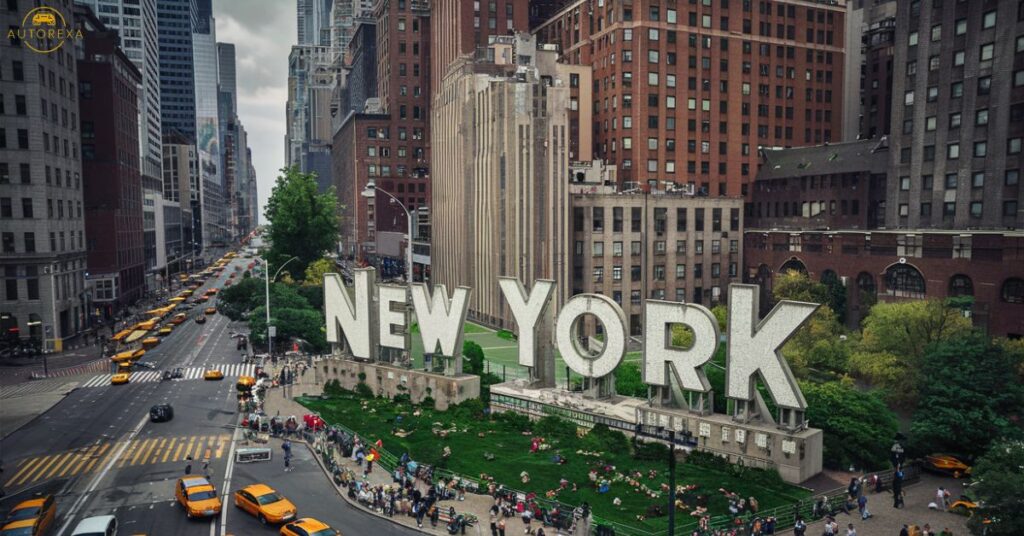
Capital: Albany, located in the eastern part of the state, along the west bank of the Hudson River.
Largest City: New York City, also known as the Big Apple, situated in the southeastern part of the state.
Governor: Kathy Hochul, assumed office on August 24, 2021, following the resignation of Andrew Cuomo.
Population: Approximately New York Population 2024 is (7.9) Million.
Statehood: New York gained statehood on July 26, 1788 – (11th state).
Nickname: Empire State, reflecting its historical wealth and influence.
New York Window Tinting Laws
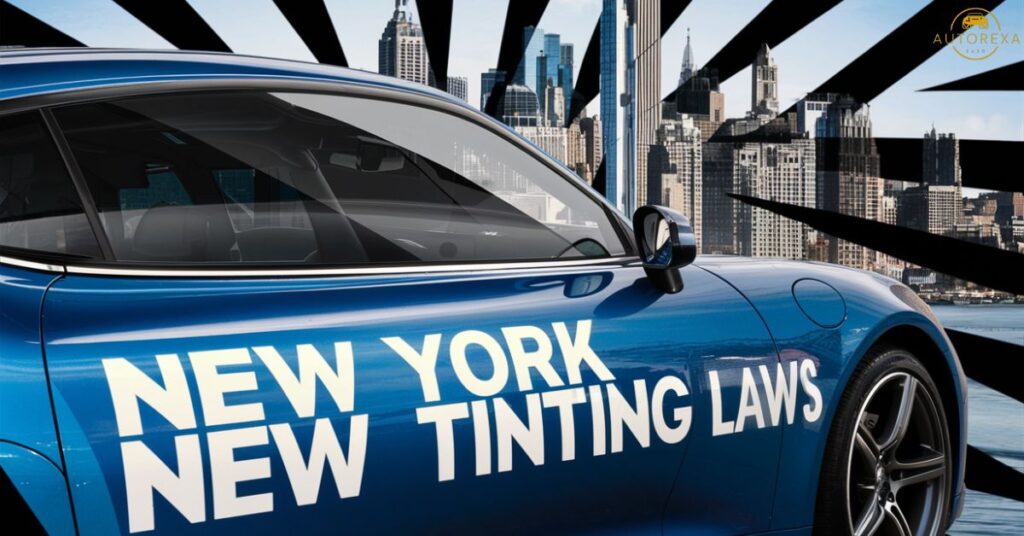
New York Window Tinting Laws regulate the darkness of window tint in vehicles ensuring safety and compliance on roads. All vehicles must adhere to specified light transmission percentages set by these laws which are crucial for maintaining visibility and safety for drivers and passengers alike.
These laws prohibit excessively dark tint on windshields and front side windows mandating that at least seventy percent of outside light must pass through windows. This mandate aims to maintain visibility for drivers reducing the risk of accidents and enhancing overall road safety.
Compliance with these laws is essential for vehicle owners to avoid fines or failed inspections. Therefore it is crucial to understand and follow New York’s window tint regulations, which play a vital role in ensuring safety and adherence to the law on the state’s roads.
What is Window Tinting?
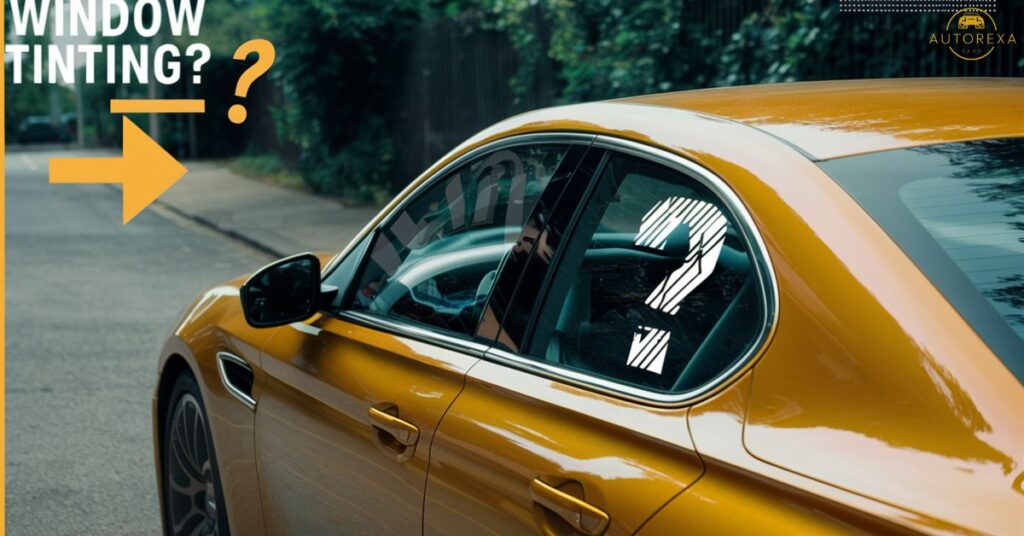
Window tinting involves applying a thin film to vehicle or building windows, mainly to reduce sunlight and heat penetration. This film also enhances privacy by obstructing visibility from outside.
The primary goal of window tinting is to block harmful UV rays, safeguarding occupants and interior furnishings from damage and fading. Additionally, it minimizes glare and heat, enhancing comfort and reducing the reliance on air conditioning.
Overall, window tinting offers numerous benefits, including increased privacy, UV protection, and improved comfort and energy efficiency for vehicles and buildings.
What is VLT?
VLT, or Visible Light Transmission, measures how much light passes through a window tint. It indicates the percentage of visible light that can penetrate both the film and the glass.
Understanding VLT is crucial when selecting window tint for vehicles or buildings. It helps determine the level of privacy, heat rejection, and UV protection provided by the tint.
Types of Window Tint
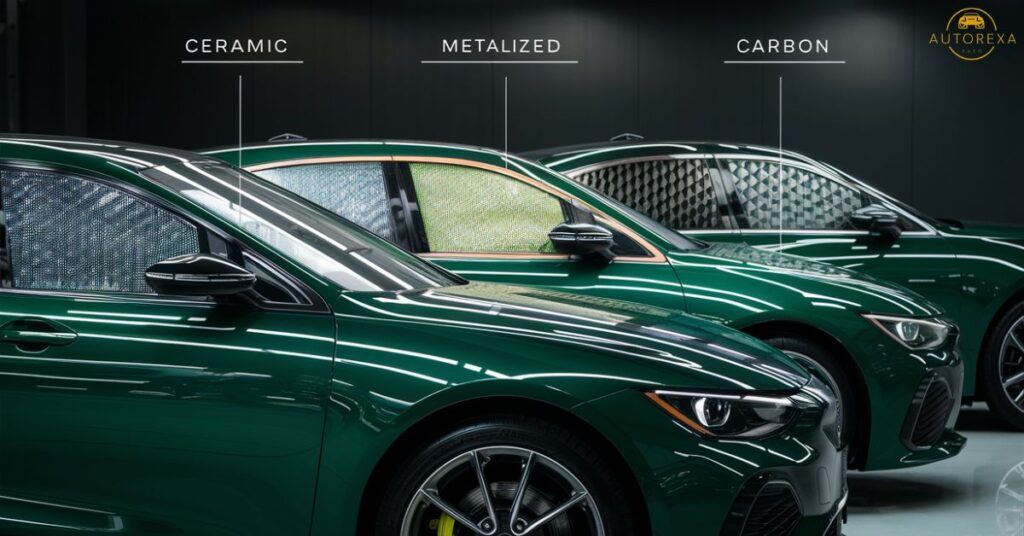
Window tint comes in various types, each offering unique benefits and features.
- Dyed window tint absorbs sunlight to reduce heat and glare, offering affordability and privacy.
- Metalized window tint reflects heat and UV rays away from the vehicle, providing excellent heat rejection and durability.
- Ceramic window tint is a premium option known for superior heat rejection and clarity, without containing metal or dyes.
- Carbon window tint combines benefits of dyed and ceramic tints, providing good heat rejection, UV protection, and durability.
- Considerations include heat rejection, UV protection, durability, interference with electronic signals, and cost.
- Choose the type of window tint that best suits your specific needs and preferences.
- Proper installation and maintenance are essential to maximize the benefits of window tint.
Can I have tinted windows on my vehicle?

Yes, you can have tinted windows on your vehicle in New York State.
However, there are regulations you must follow to ensure compliance with the law. In New York, specific guidelines dictate the darkness and reflectivity of window tint.
Legal Windshield Window Film in New York
In New York, legal windshield window film regulations allow for tinting on the top six inches of the windshield. This tinting can be of any darkness level, but the remaining windshield must allow more than 70% of light transmission.
It’s crucial to comply with these guidelines to avoid legal issues and ensure safe driving conditions.
How dark can your window tint be in New York?

In New York, regulations specify how dark window tint can be on vehicles. For sedans, the windshield must allow more than 70% of light in, with non-reflective tint allowed on the top 6 inches. Front and back side windows of sedans must also allow more than 70% of light through.
Similarly, for SUVs and vans, the windshield should permit more than 70% of light transmission. Non-reflective tint can be applied to the top 6 inches. Front side windows must also allow more than 70% of light in, while back side windows can have any darkness level.
These laws ensure visibility and safety on the road while still allowing for some customization. It’s essential to adhere to these regulations to avoid fines and ensure compliance with state laws.
Tint darkness for passenger vehicles
Tint darkness for passenger vehicles varies by window type. Front side windows must allow over 50% of light in, while any level of darkness is permitted for back windows. Non-reflective tint is allowed on the top 5 inches of the windshield.
Legal Limit: Front side windows must allow over 50% of light in.
Back Windows: Any level of darkness is permitted.
Windshield: Non-reflective tint is allowed on the top 5 inches.
Visibility: Maintain clear visibility for safe driving.
Avoid Fines: Stay within legal limits to avoid penalties.
Read This Blog:North Carolina Window Tinting Laws – 2023 New Car Tint Laws in NC
Tint darkness for multi-purpose vehicles
Tint darkness regulations for passenger vehicles dictate that front side windows must allow over 50% of light in. Meanwhile, back windows have more flexibility, permitting any level of darkness. Non-reflective tint is permissible on the top 5 inches of the windshield.
Legal Limit: Front side windows must allow over 50% of light in.
Back Windows: Any level of darkness is permitted.
Windshield: Non-reflective tint is allowed on the top 5 inches.
Visibility: Maintain clear visibility for safe driving.
Avoid Fines: Stay within legal limits to avoid penalties.
How reflective can your window tint be in New York?

When it comes to reflectivity of New York window tinting laws regulations are stringent. The law prohibits any mirrored or metallic appearance on window tint films. This rule applies to both front and back side windows of vehicles, ensuring uniformity across all windows.
Moreover, regardless of the type of vehicle, whether sedan or SUV, no mirrored or metallic appearance is allowed. This ensures that vehicles maintain a consistent appearance on the road, promoting safety and adherence to state regulations.
To avoid fines and ensure compliance, it’s crucial to choose window tint films that do not have any mirrored or metallic properties. By adhering to these guidelines, drivers can enjoy the benefits of window tinting while staying within legal limits.
Also Read This:Massachusetts Window Tinting Laws – 2023 New Car Tint Laws in MA
Tint reflection for sedans
In New York, tint reflection for sedans is strictly regulated. Sedans must adhere to rules that prohibit any mirrored or metallic appearance on their window tint films. This ensures visibility and safety on the road.
| Aspect | Description |
| Legal Limit | No mirrored or metallic appearance allowed on front and back side windows. |
| Windshield | Non-reflective tint permitted on the top 5 inches. |
| Visibility | Ensure clear visibility for safe driving conditions. |
| Compliance | Adhere to regulations to avoid fines and penalties. |
| Safety | Reflective tinting should not hinder visibility or cause distractions. |
| Certification | Use certified window tint film to ensure quality and compliance. |
Tint reflection for SUV and vans
SUV and van window tinting must avoid mirrored or metallic looks. Clear visibility is essential for safe driving. Always use certified tint films for legality.
| Aspect | Description |
| Legal Limit | No mirrored or metallic appearance allowed on front and back side windows. |
| Windshield | Non-reflective tint permitted on the top 5 inches. |
| Visibility | Ensure clear visibility for safe driving conditions. |
| Compliance | Adhere to regulations to avoid fines and penalties. |
| Safety | Reflective tinting should not hinder visibility or cause distractions. |
| Certification | Use certified window tint film to ensure quality and compliance. |
| Customization | Customize tinting options according to personal preferences. |
| Consultation | Seek professional advice for proper installation and compliance. |
Other New York window tint rules and regulations
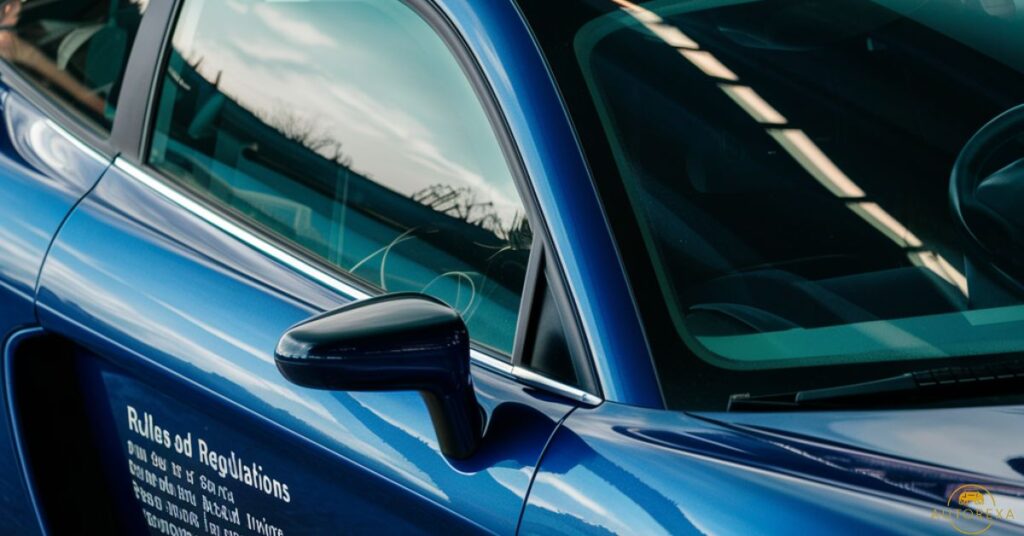
Some other rules and regulations,
Side Mirrors: Dual side mirrors must be installed if the back windshield is tinted.
Restricted Colors: New York tint laws do not explicitly ban any colors of tint.
Certificate Requirements: Film manufacturers are not obligated to certify the film they sell in New York.
Sticker Requirements: A sticker identifying legal tinting is mandatory and must be placed between the film and glass on each tinted window.
Medical Exemption: New York provides medical exemptions for special tint. Detailed terms of the exemption can be found in the state law.
Window Tint Law Violations in New York
Window tint law violations in New York can lead to fines of up to $150. Nearly a million tint-related tickets have been issued in the state over the past decade. Illegal tinting can result in inspection failures, leading to additional costs and inconvenience.
It is critical to follow to tint regulations to avoid penalties and ensure compliance during yearly vehicle inspections. Exceptions for medical or commercial purposes may apply, but it’s best to stay within legal limits to avoid complications.
Frequently Asked Questions
What are the legal tint limits for car windows in New York?
In New York, car windows must allow more than 70% of light in, except for the rear windows which can have any darkness.
Can I tint my windshield in New York?
Yes, but only the top 6 inches can have non-reflective tint with any darkness, while the rest must allow over 70% of light in.
Are there exceptions for medical conditions?
Yes, certain medical conditions like lupus erythematosus or chronic actinic dermatitis may qualify for darker tinting with a medical exemption.
What happens if my window tint is too dark?
Vehicles with illegally dark tint may face fines of up to $150 and can fail yearly inspections, requiring removal or replacement of the tint.
Do I need to certify my tint film in New York?
No, manufacturers are not required to certify tint film, but drivers must ensure it meets state regulations and display proper certification stickers.
Conclusion
New York window tinting laws, updated in 20230 aims to balance privacy safety and compliance. With regulations allowing certain darkness levels for different windows, drivers can customize their tint while ensuring visibility and adherence to the law. Understanding these laws not only avoids fines but also promotes safer driving conditions and protects against harmful UV rays.







